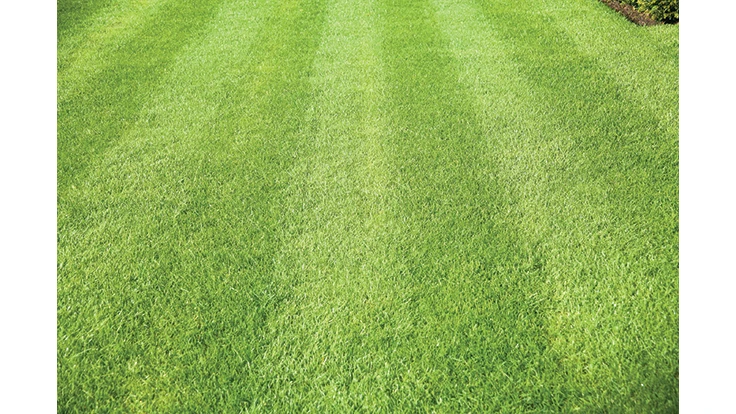
The key to lush, green lawns is proper fertilizer application, but it can be tough to know when and how to do it. Here are some tips from the experts on how to plan your attack:
A good foundation
Knowing what’s under the grass is the key to figuring out how much fertilizer to apply and when to do it. While you can check the pH of soil without conducting a full test, there’s no other way to find out how much phosphorus or potassium are in the soil.
Typically, when doing soil testing, Jeff Carroll, owner of Jefferson Sustainable Landscape Management in Woodinville, Washington, finds that the soil has way too much nitrogen as a result of over fertilizing. Nitrogen will give you a nice, green lawn, but not long-term plant health, so it’s important to look at pH and other nutrients.
Flying blind can be costly in wasted fertilizer or failed plantings. Charles Darrah, consulting landscape agronomist and president of CLC LABS in Westerville, Ohio, says that new seedings often fail three times before sticking.
“The reason they catch the third or fourth time is because after that amount of time, they finally have put the right amount of fertilizer down,” he says. “They could be successful doing it right the first time by using the information from a soil test.”
And it’s not just the existing nutrients that dictate the schedule. Sandy soil leaches fertilizer faster than clay. “There aren’t as many nutrients in (sandy) soil so it will need more fertilizer applications each year closer together,” says Henry Velez, enhancement manager at Green Acres Landscape in Salem, Oregon.
Tyron Jones, president of Deans Pest Control in Fruitland Park, Florida, conducts numerous soil samples when enrolling new clients in a program. “We have done hundreds of soil samples over the years, and if I was starting a brand-new company, I’d run out and do 50 to 100 soil samples to get a good idea of what you’re working with on your lawns,” he says.
Watch the weather
Unpredictable weather can be devastating if you aren’t prepared for it. A cold snap can ruin a lawn if it has recently been fertilized. If nitrogen gets stuck in the grass, it can cause serious damage. So Jones recommends using lower nitrogen rates if that’s a possibility.
Once freezing temperatures are out of the picture, it’s important to watch for drought conditions. If there isn’t enough water, the grass will burn. So fertilize only before the forecast calls for rain, or be sure to water after applying. But also beware of too much rain. Heavy rains or thunderstorms can wash away recently applied fertilizer before it has a chance to do its job.
And in areas where freezing isn’t an issue, heat can lead to fertilizer burn.
“Sometimes it’s difficult to predict what the weather’s going to do,” says Peter Landschoot, professor of turfgrass science at Pennsylvania State University where temperatures can get into the 90s in late May. “If you’re going out and trying to treat lawns in a short period of time, and you don’t have the flexibility of waiting for three days before you put another application down, to avoid burn and you don’t have control over watering material in either then it’s probably better to use something a little safer with respect to burn potential.”
Latest from Lawn & Landscape
- Sgro named Yanmar Compact Equipment's North American president
- Aphix acquires Curb Appeal Landscaping in Birmingham
- Project EverGreen helps revitalize Milan Park in Detroit
- Trex Company wins Product of the Year, Judges’ Choice Winner at Environment+Energy Leader Awards
- General Equipment & Supplies in Fargo adds Takeuchi equipment
- Mariani Premier Group acquires Hazeltine Nurseries
- EnP Investments adds Mark McCarel as Northeast territory sales manager
- Our April issue is now live





